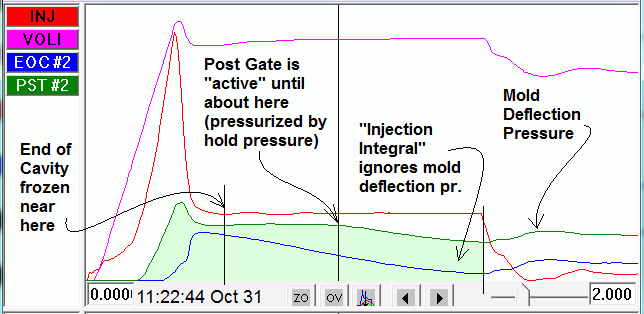Tip of the Day 175: Full Integrals vs. Fill and Pack Integral
In Tip #174 you saw how Fill and Pack Integral could be useful for monitoring dimensions in very thin-wall, fast freezing parts. In that discussion we used End of Cavity as the indicator, assuming that the dimension near the end of the cavity was most important.
A couple of readers caught the idea that perhaps End of Cavity is not necessarily the whole story. This is quite true. Some thin-wall parts freeze almost all at once; for example cell phone covers. Others may have some flowable material near the gate well after the time that the material freezes at the end of the cavity. In such cases Cycle Integral or Injection Integral† near the gate would be more appropriate to find dimensional variation in that area of the part.

† In the graph above, we chose “Injection Integral / Post Gate #2” instead of “Cycle Integral” to detect a dimensional quality problem in that area. If the whole part is frozen at the end of hold, then the pressure rise due to mold deflection after hold adds non-useful variation to the data we want for dimensions. Using “Injection Integral” ignores mold deflection variation after the end of hold.
Nevertheless, in all cases you should check the correlation to dimensions of both “Injection Integral” and “Cycle Integral”. Sometimes one correlates to dimensions better and sometimes the other.